(11) The Tropical Rainforest case study
1/35
There's no tags or description
Looks like no tags are added yet.
Name | Mastery | Learn | Test | Matching | Spaced |
|---|
No study sessions yet.
36 Terms
The Amazon
670 million hectares
... the world's Amazon basin is the world's largest rainforest and one of the most biodiverse
- 300 billion trees
- 15,000 species
- stores 20% of all the carbon in the planet's biomass
- spread across 9 countries
- home to 34million people who depend on the resources it provides
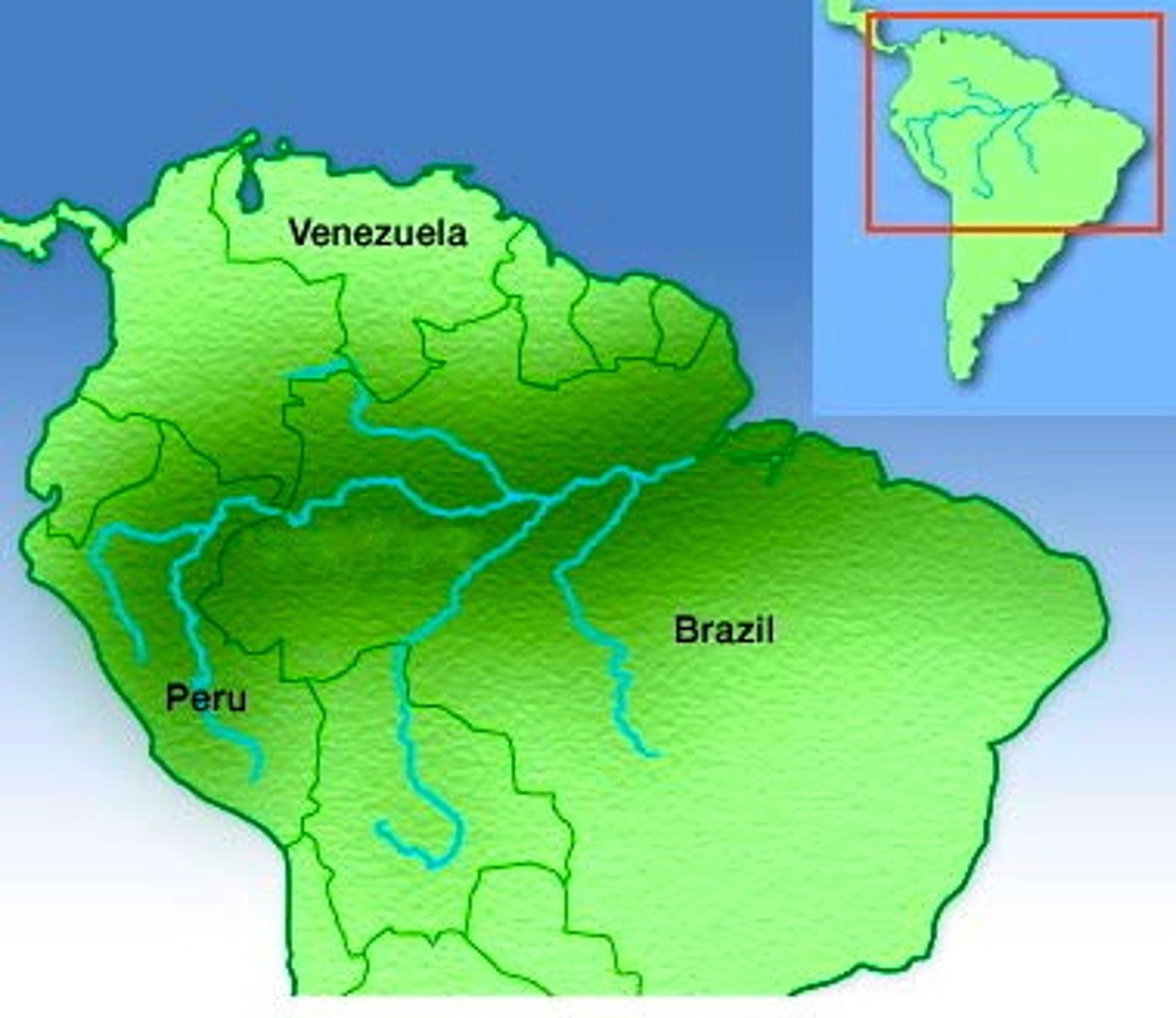
Background - climate
Hot and humid => Brazil is 23 degrees South of equator meaning temperatures range from 25-27 degrees C & rainfall averages at 2677mm/year
... most precipitation occurs as heavy convectional storms, with well distributed rainfall throughout the year in western Amazonia, but southern and eastern areas experience short dry seasons with slightly less precipitation
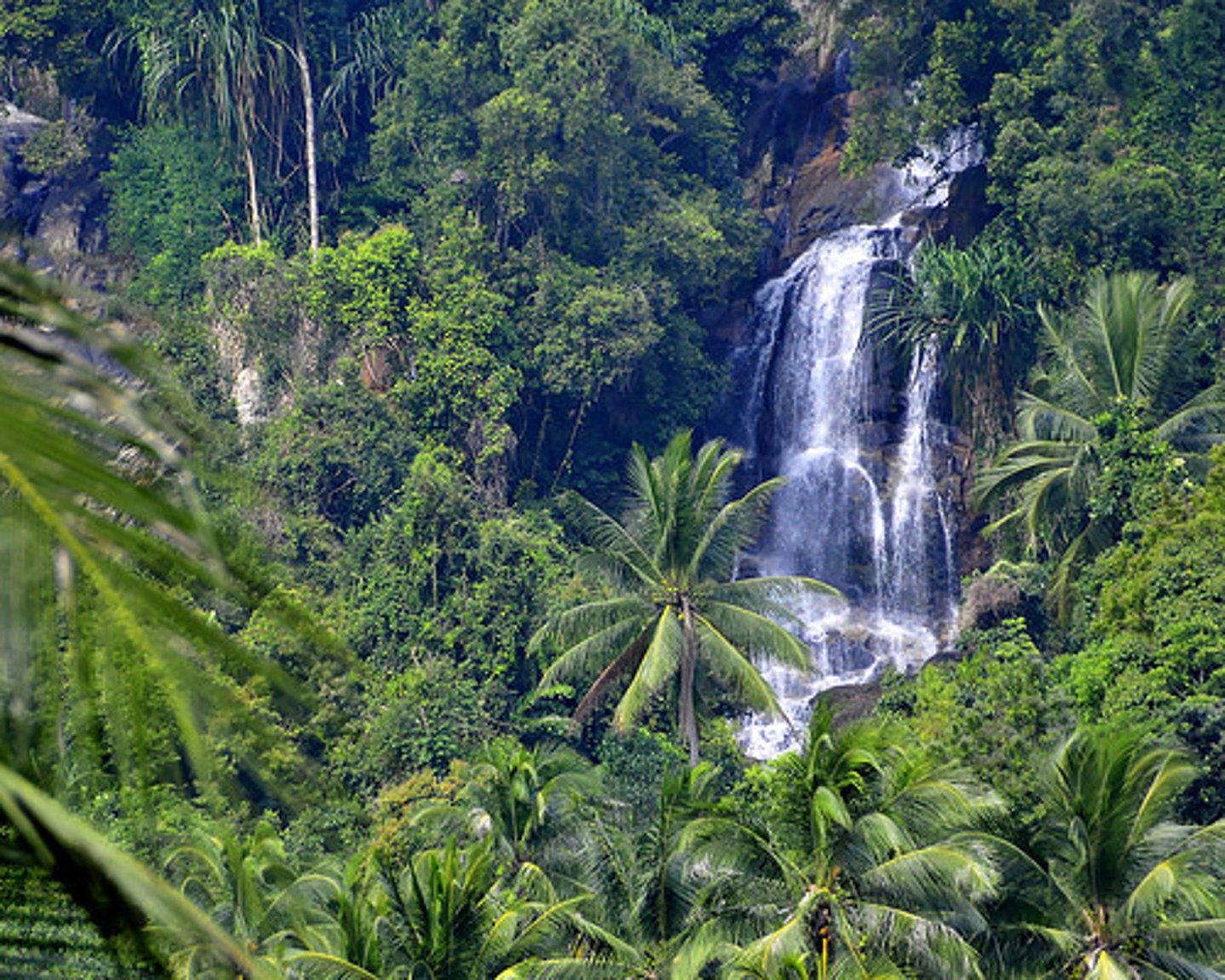
Background - flora and fauna
Primary productivity is very high, and the biome is the most biodiverse ecosystem in the world
- 1300 species of birds
- 428 species of amphibians
- 427 species of mammals
- 378 species of reptiles
- 3000 species of fish
... complex food webs between organisms
=> constant warm temperatures permit reproduction all year around, which means that natural selection and evolution take place relatively rapidly
=> growth isn't restricted by water supply
=> forest stratification - 4 layers of the rainforest (emergent, canopy, under-canopy, shrub) - creates variations in humidity, temperature, humidity, light, and soil conditions, producing a wide variety of ecological niches
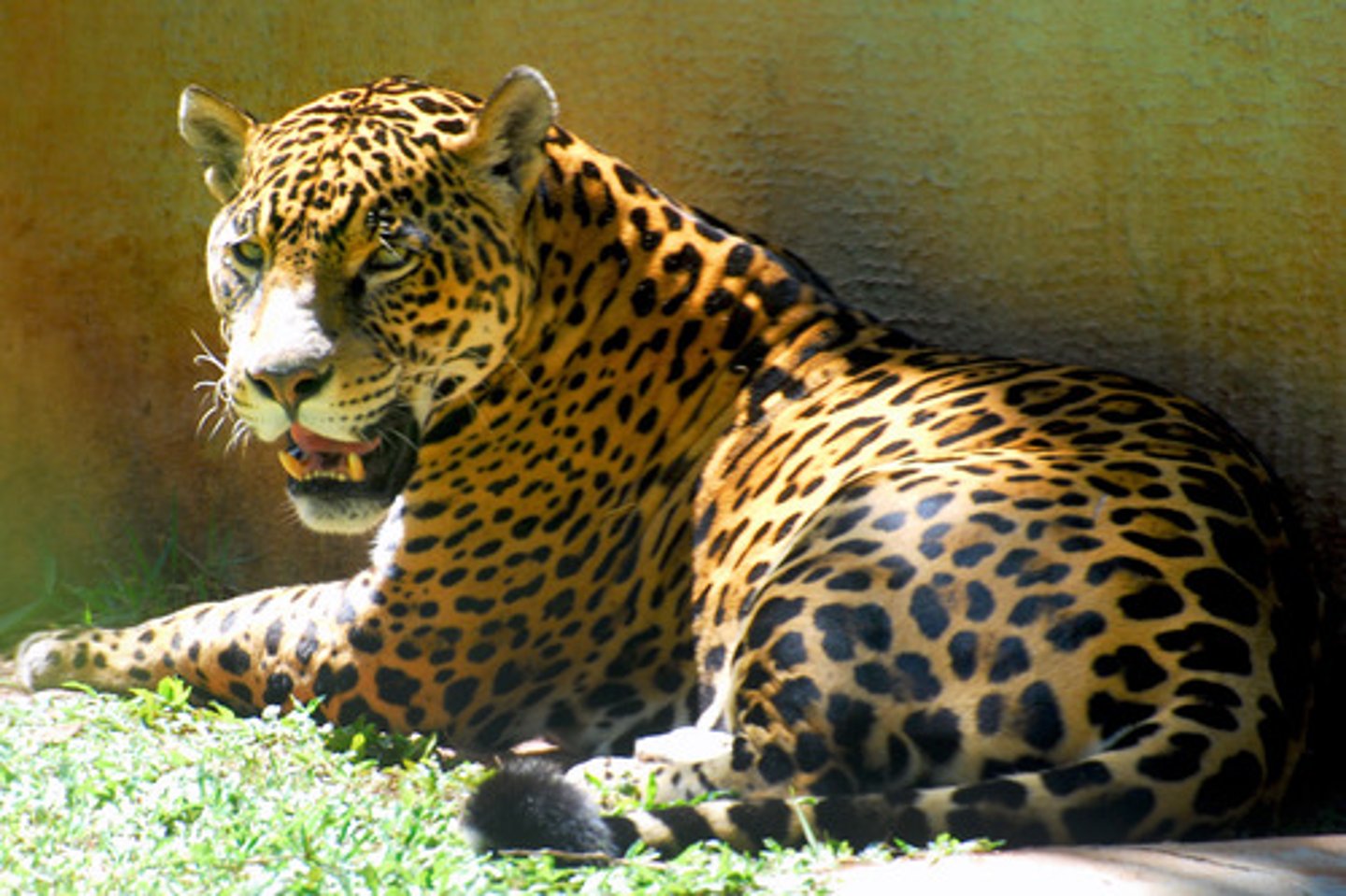
Background - soils
=> latosols, deep because of warm, wet conditions that encourage intense weathering of the bedrock
=> heavy rainfall encourages intense leaching of soluble minerals which leaves the soil acidic
=> leaching removes soluble minerals and leaves behind iron rich, nutrient deficient soil
=> matter is rapidly recycled by decomposers which thrive in war, wet conditions, developing thick humus layer
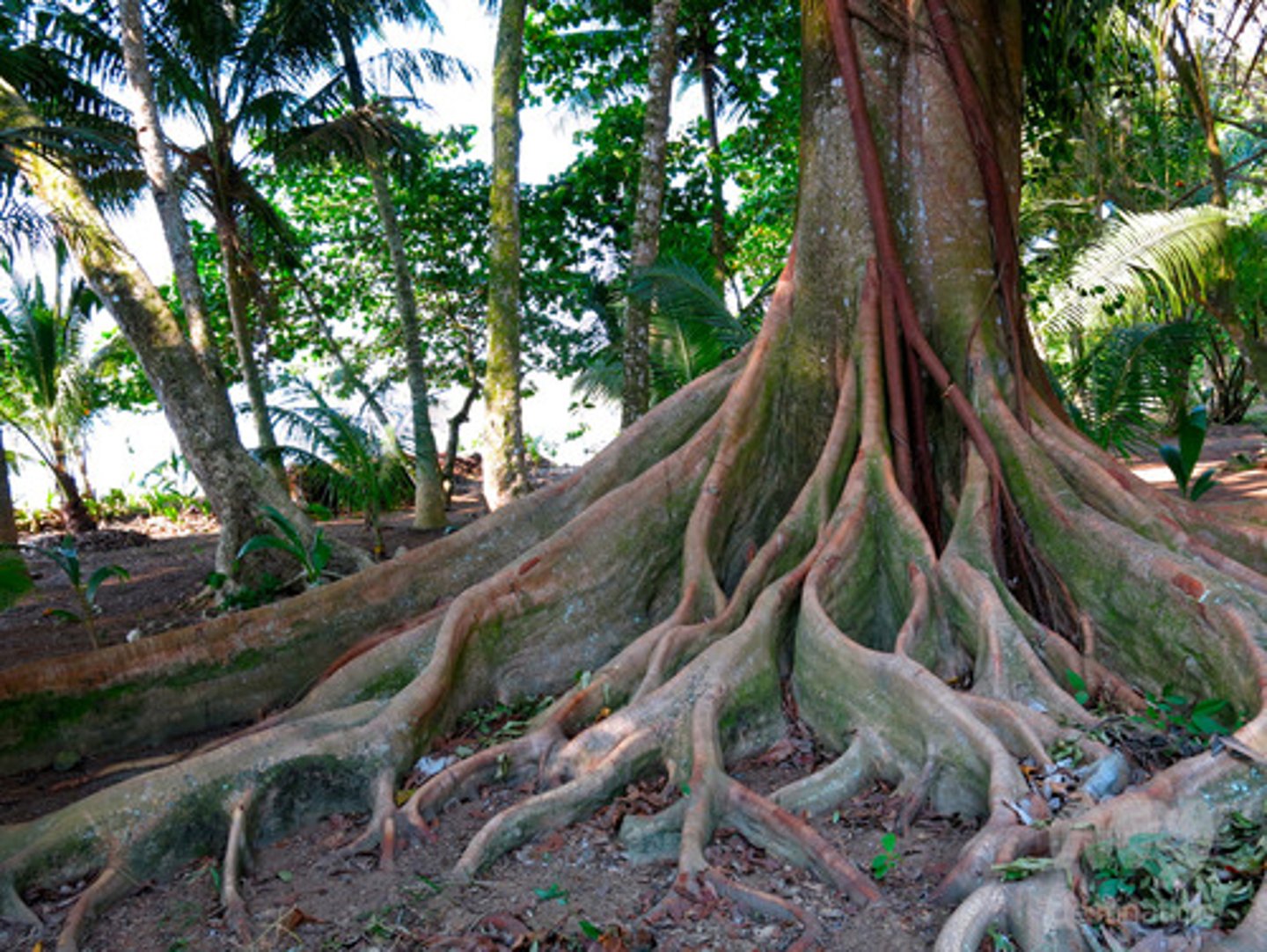
Predictions of deforestation in the Amazon
Some computer models predict large scale substitution of the Amazon Forest by savanna conditions by the end of the 21st century
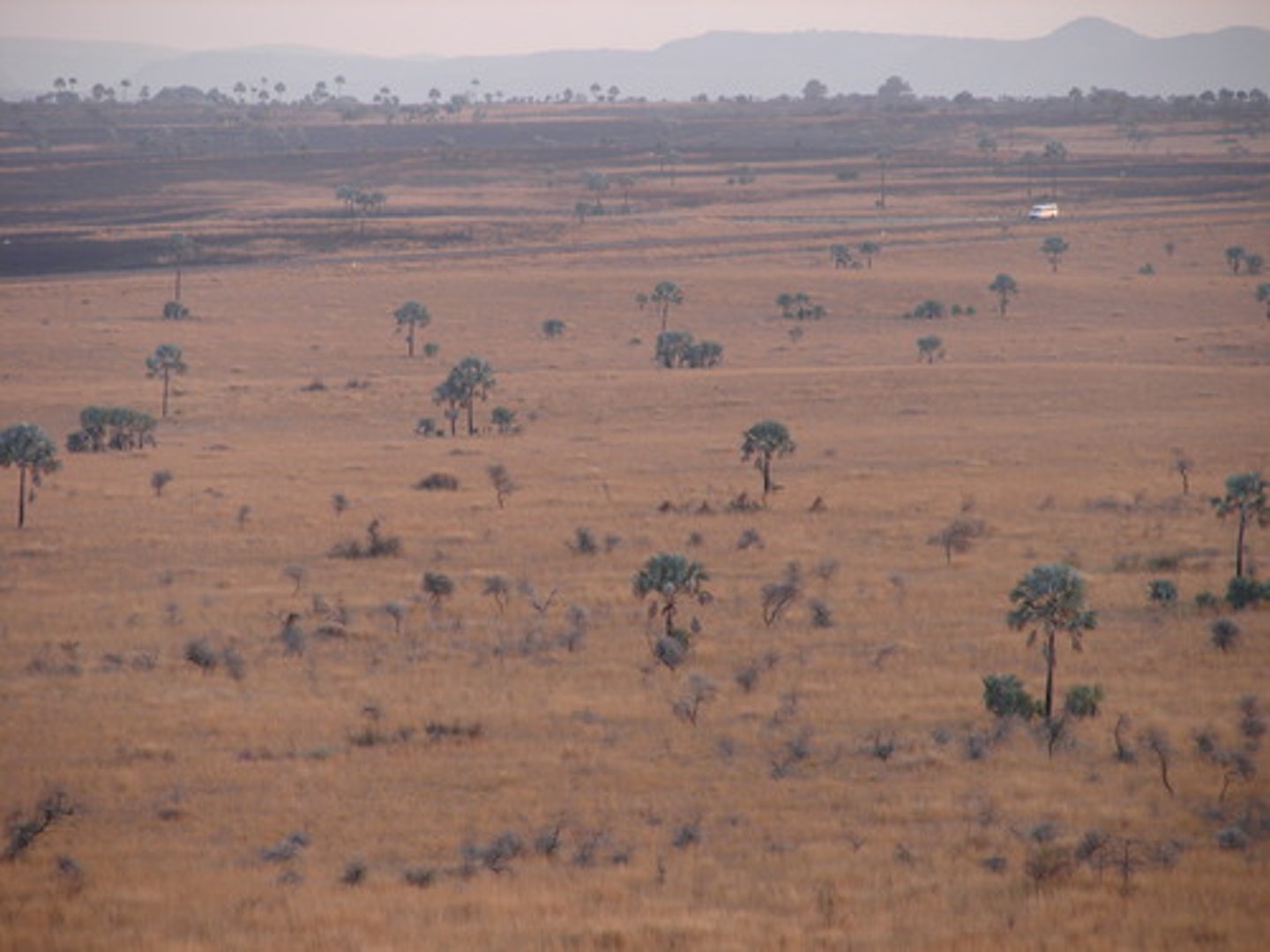
Water in the Amazon Rainforest
- The discharge of the river amazon accounts for 15% of all freshwaters entering the oceans each day
- The Rio Negro = the 2nd largest river in the world in terms of water flow (14km wide)
- Average precipitation across the Amazon basin is approx. 2300mm annually
... in some northern areas which experience more rainfall, can exceed 6000mm
- Up to 50% of this rain may never reach the ground as it is intercepted and evaporated
- Of this water that is evapotranspired by vegetation about 50% falls again as rain
- Only about 30% of the rainfall ever reaches the sea and the rest is caught up in this closed system of water recycling
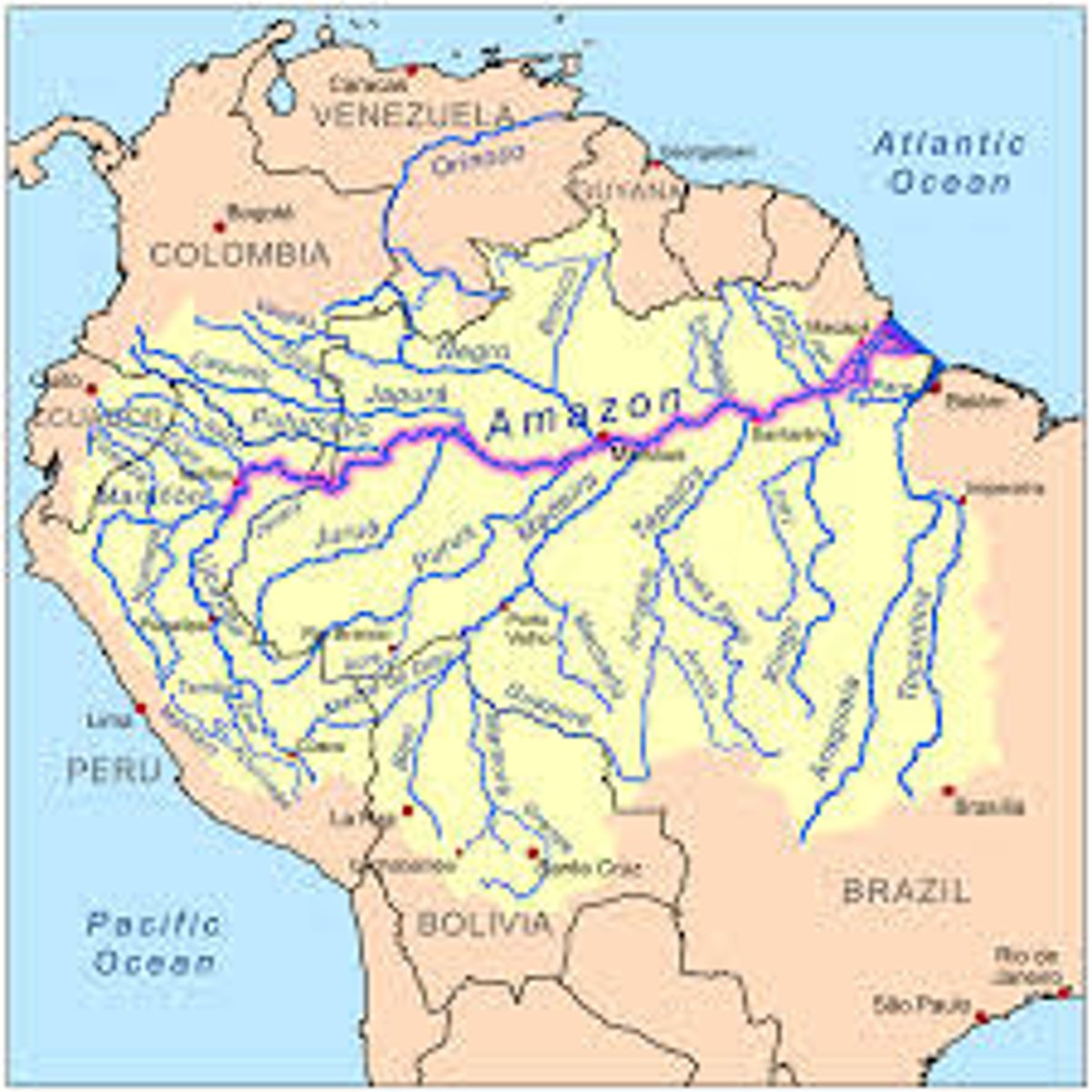
The water cycle in a tropical rainforest
1. Water from precipitation is intercepted
.... The dense canopy intercepts much of the rainfall, preventing it from hitting the ground directly, and much of it is transpired
2. Rain water is transferred to the forest floor by a combination of drip flow and stem flow
... drip tips help the tree to shed water from each leaf and the rest trickles down branches and stems
3. Most rainforest plants have very shallow roots that take rainwater and dissolved nutrients directly from the decomposing leaf litter
4. Water is transported in plant tissue and evapotranspired back into the atmosphere from pores in the leaves
=> in dense forest canopy, up to 75% of rainfall is intercepted, and about 25% of this water is evaporated
=> of this remaining 75%, 50% is used in plants and eventually evapotranspired, whilst the other half infiltrates into the soil to be stored temporarily on the ground surface or flowing overland to river channels
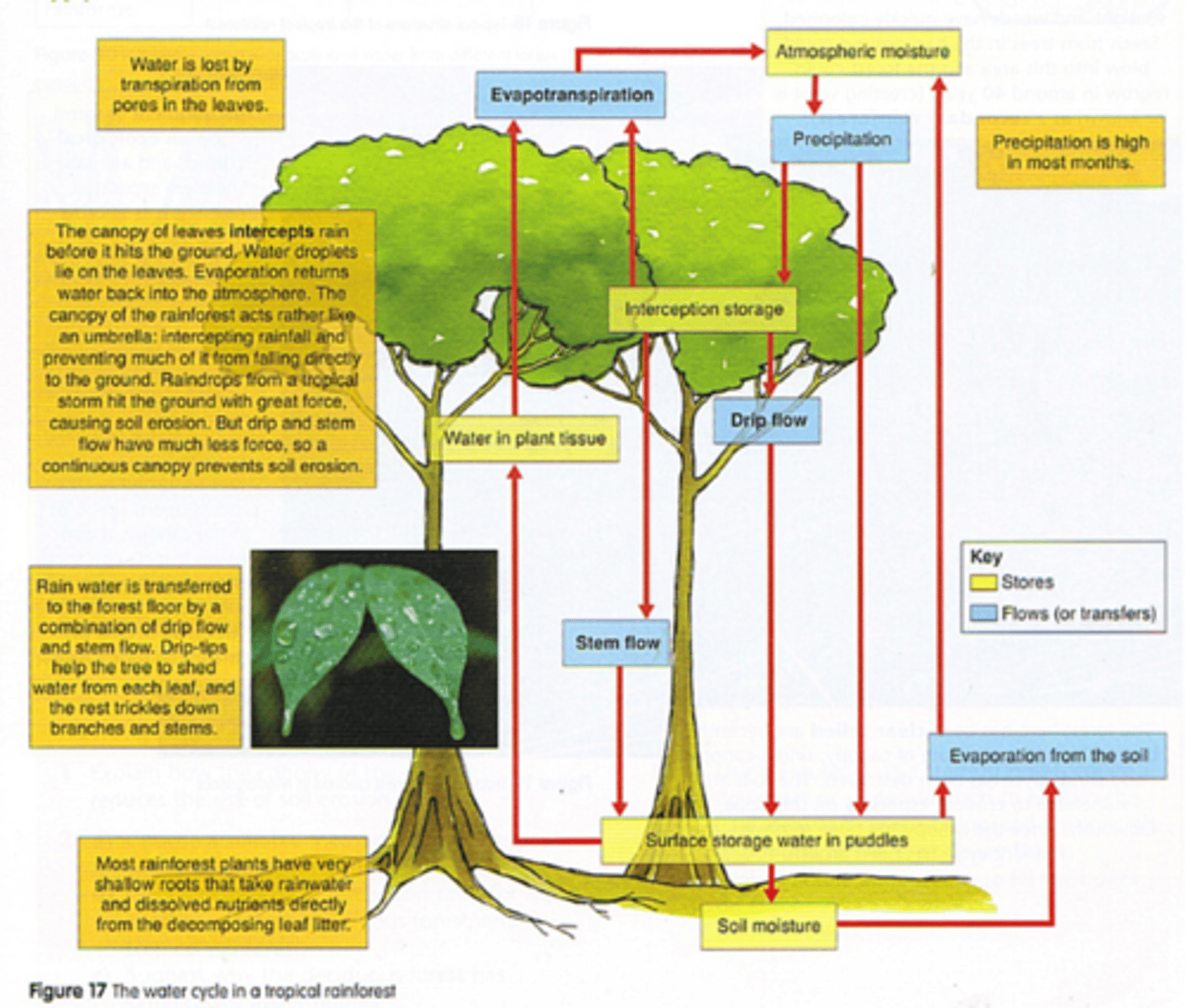
Impact of human activity + environmental change on water cycle
...commercial farming, mining, logging, settlements
1. Atmosphere becomes less humid as evapotranspiration is reduced
2. With few trees, most rainfall reaches the ground immediately, compacting the soil and encouraging overland flow
3. Few trees remain so there is less interception of water or evaporation off leaves => transpiration will be virtually zero
4. Rates of runoff will increase with an increased risk of flooding
5. Exposed to the sun, the soil will become very dry and vulnerable to erosion
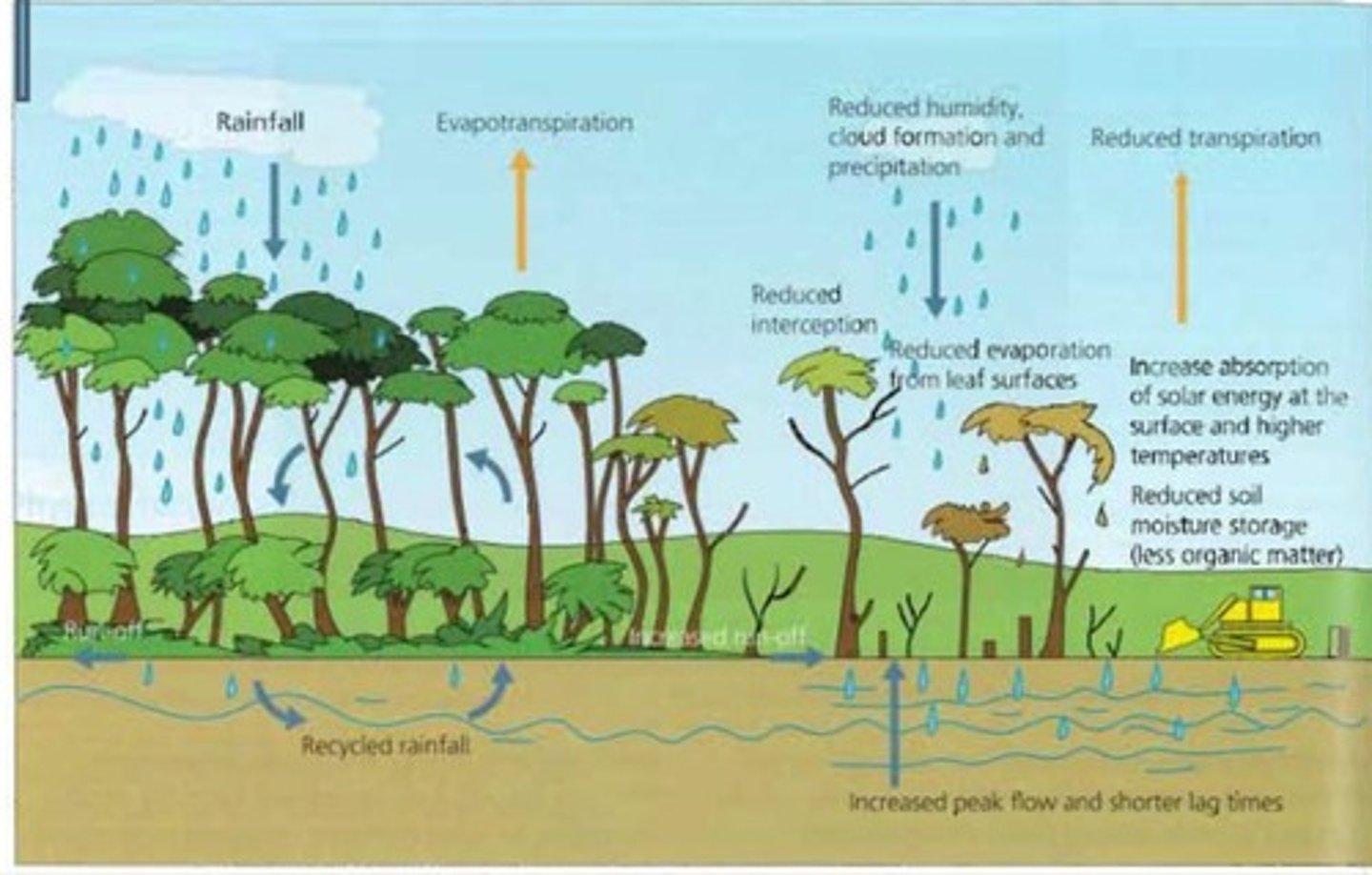
deforestation affects climate and rainfall patterns
... rainforests allow a considerable amount of water to be returned to the atmosphere through evapotranspiration
- when forests are replaced by pasture or crops evapotranspiration is typically reduced, leading to reduced atmospheric humidity and suppressing precipitation
- any water evaporated from deforested areas tends to form cumulus clouds, which do not produce rain and results in drier climates
- Study from university of Leeds: "estimated future deforestation of 30% in the amazon could lead to 20% declines in regional rainfall by 21000
- positive feedback leading to drier conditions in amazon

diameter of the mouth of the Amazon
= around 200km wide
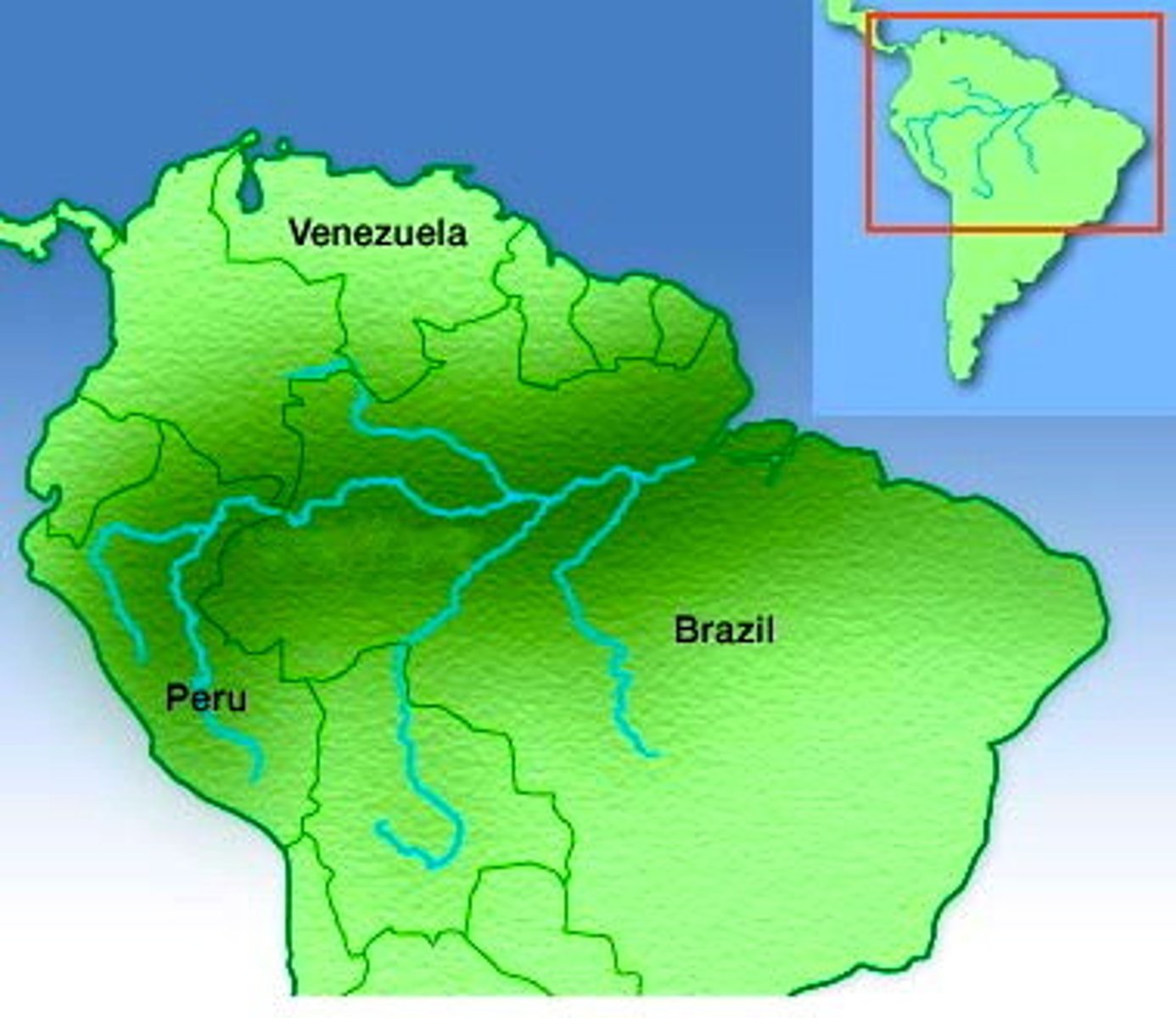
Carbon in the Amazon Rainforest
- The amazon stores 140 billion tonnes of carbon
... equivalent to 140 years' worth of anthropogenic carbon emissions over an area half the size of Europe
- It has increased in biomass by 0.5% due to carbon fertilisation to cope with increased atmospheric CO2 levels
- Amazonian trees are losing their capacity to absorb CO2 and carbon fertilisation weakens the trees so that they are physically weaker and are less resistant against disease
- Ability to act as carbon offset in the long term is misplaced and absorption of carbon is threatened
biomass mortality increased since 1985 and the combination of decreasing uptake and mortality suggest carbon storage has declined since 1990
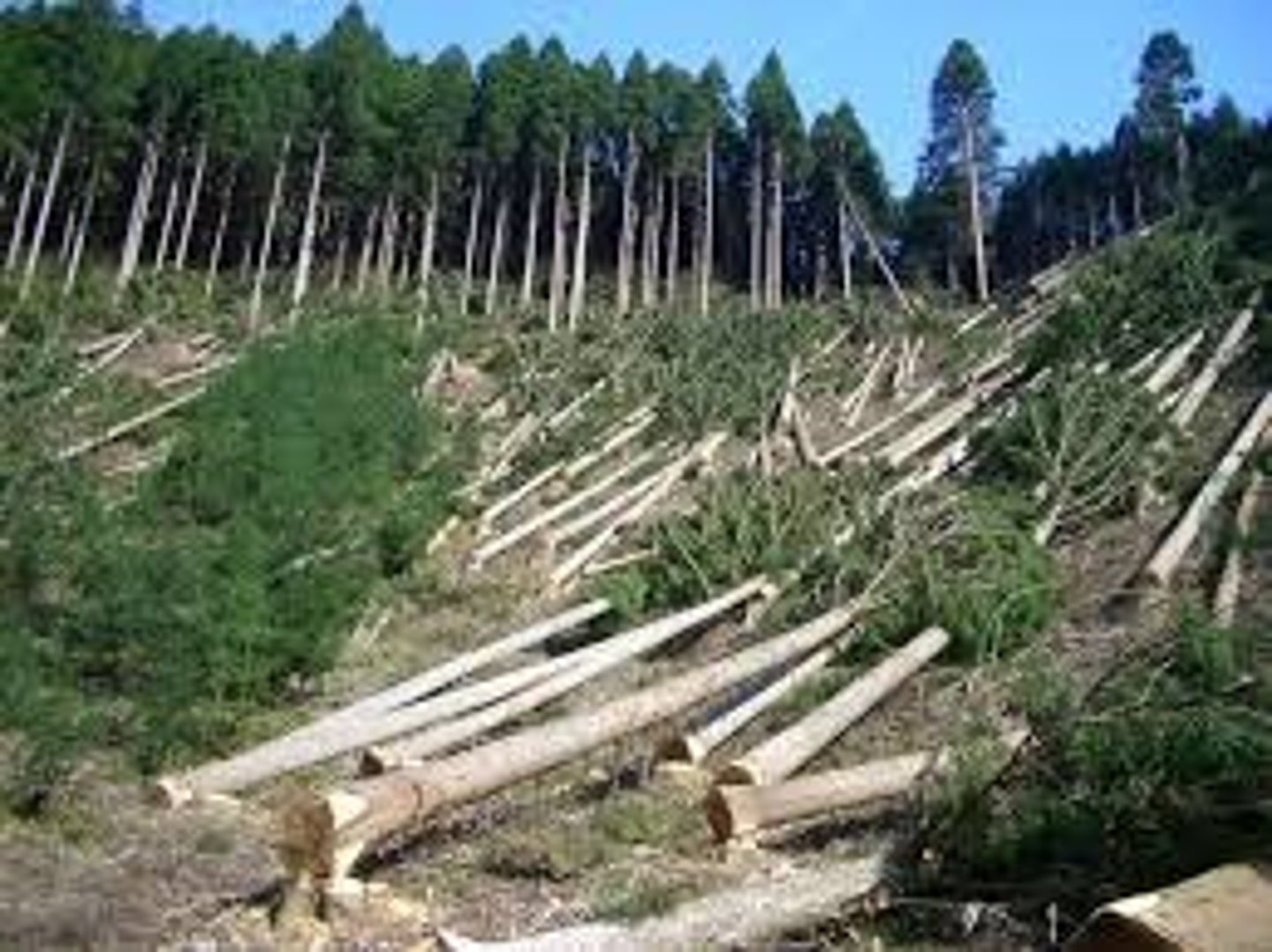
The tropical rainforest carbon cycle
1. The warm and wet tropical climate is ideal for plant growth
... this promotes the process of photosynthesis, which absorbs huge quantities of CO2 from the atmosphere
=> in return, the rainforests emit a great deal of oxygen (Rainforests = "lungs of the earth")
2. Wood is about 50% carbon, so rainforest plants and trees act as huge carbon sinks
... important in mitigating the effect of global warming
3. Respiration by plants, trees, and animals returns CO2 to the atmosphere
4. Decomposition is an active process in tropical climates where decomposers (e.g., bacteria, fungi) thrive in the warm and wet conditions
... breaks down carbon from organic matter and returns it to the atmosphere as CO2
5. Some carbon may also be stored within the soil or dissolved and then removed by streams as an output from the rainforest system
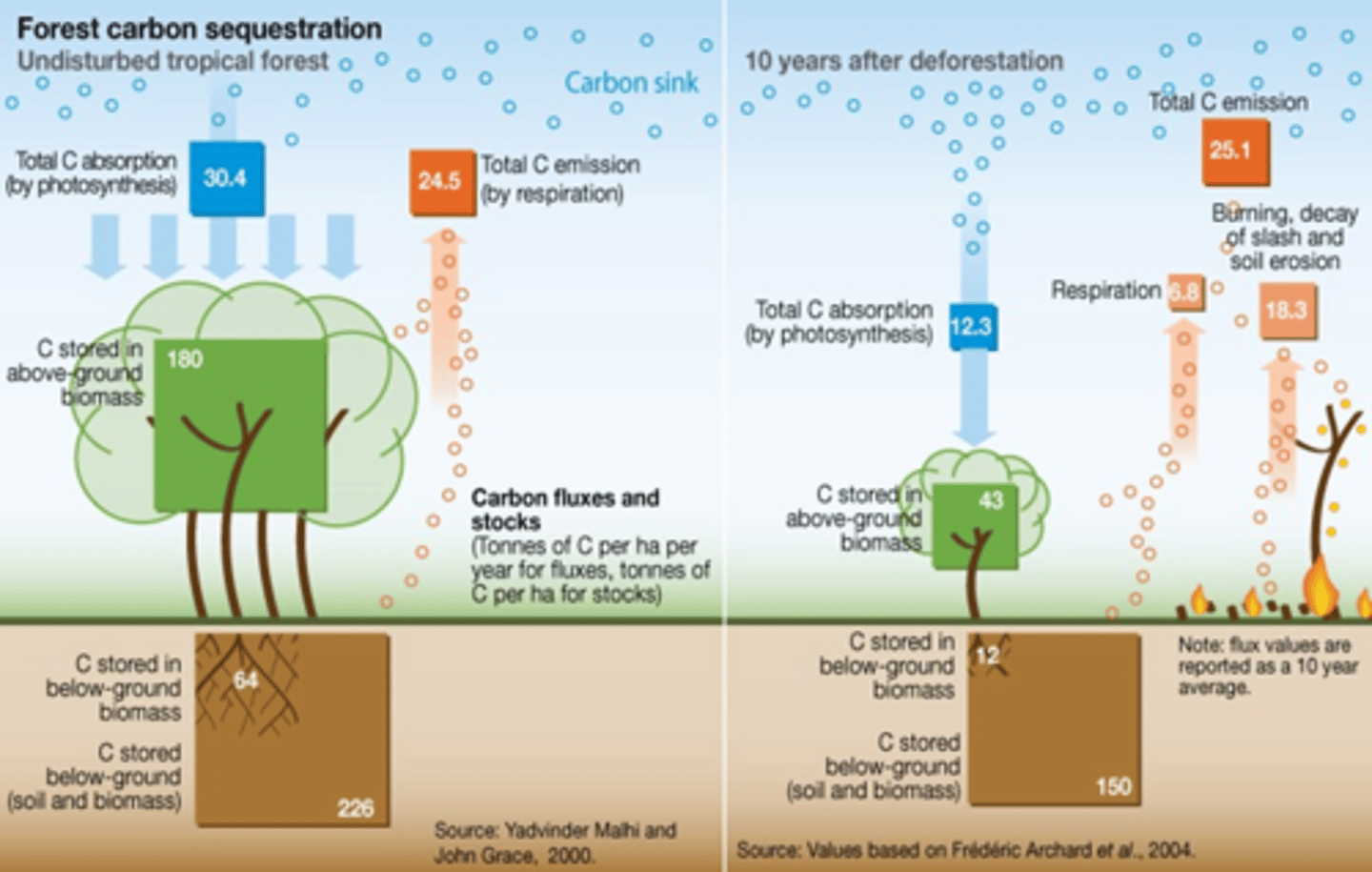
Impact of Human Activity + environmental change on carbon cycle
... Tropical rainforests are cleared to provide land for farming, mining, roads, and settlements
=> One of most common methods for clearing = slash and burn - cheap and effective
... removal of forest is via "slash and burn" technique which has effects on water and carbon cycling as well as albedo
... fires can burn out of control for weeks and spread
=> Carbon stored in trees is released back into atmosphere as CO2
... deforestation is one of the main contributors to the greenhouse gases that are responsible for climate change
=> Photosynthesis is reduced until new plants colonise the area, meaning less carbon is absorbed from the atmosphere
=> Plant and animal respiration also drops to almost zero
=> Rain washes ash into the ground, increasing the carbon content of the soil
... carbon in runoff may increase too
=> Decomposers will be largely absent from this environment
Replacing rainforest with alternate land uses (e.g., crops, pasture) reintroduces stores and flows
... these operate at much less effective levels
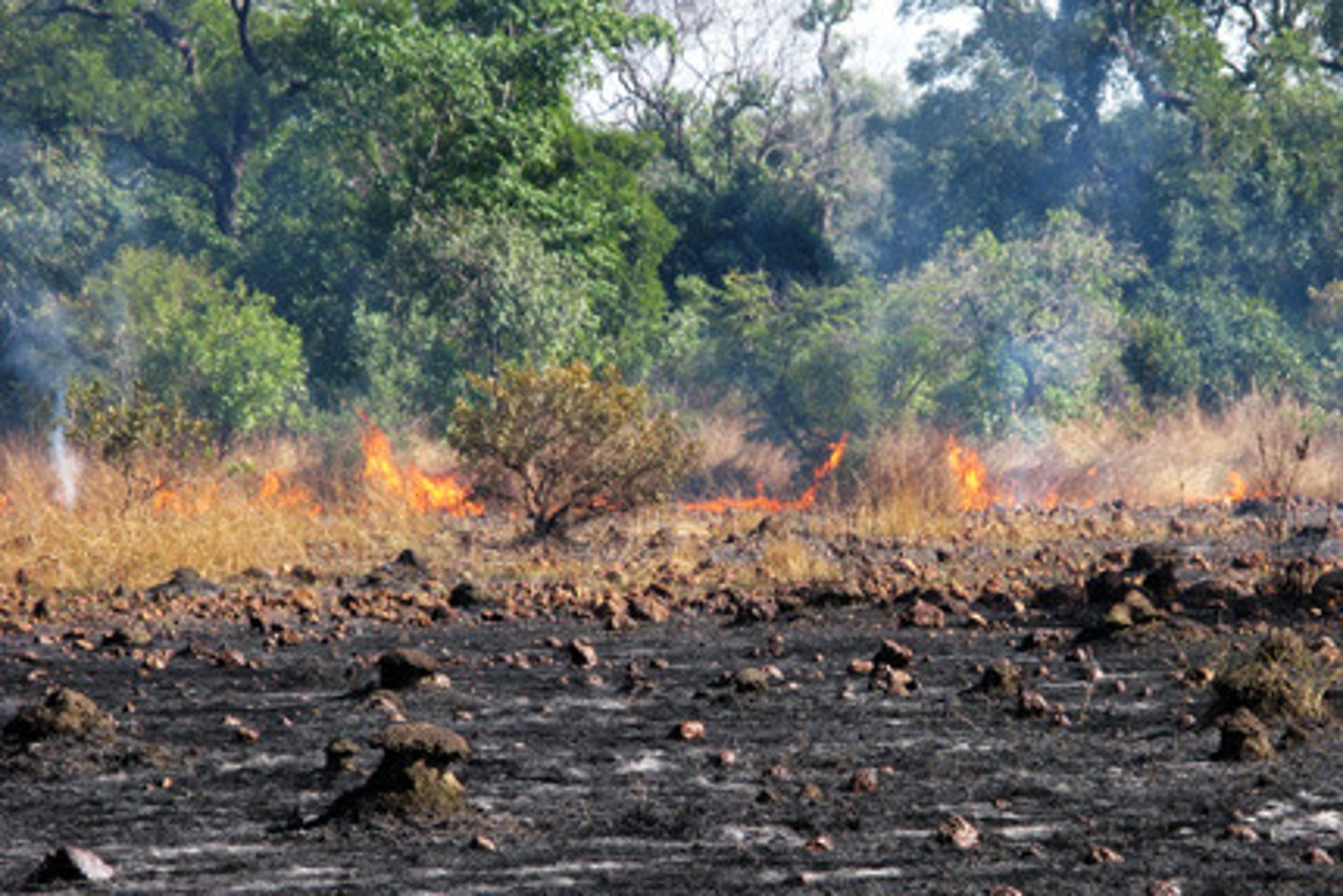
Drivers of Change - LINKS TO POP AND ENVIRONMENT (SYNOPTIC LINK)
... between 2000 and 2007 in the Brazilian Amazon was deforested at a rate of 19,300 km2/year
=> Brazil is the world's fourth largest climate polluter with 75% of their GHG emissions attributed to deforestation + land use change
Slash and Burn
Deforestation
Agriculture
Tropical Rainforest vs Pasture Land
Forest Fragmentation
Slash and Burn
... The removal of forest was done using "slash and burn" technique which"
1. Reduced the retention of humidity in the soil's top layer down to a depth of 1m
2. Facilitates sudden evaporation of water previously retained by forest canopy
3. Increases albedo and temperature
4. Reduced porosity of soil causing faster rainfall drainage, erosion and silting of rivers

Deforestation - NEED MORE UPTO DATE FACTS - NEW PMs SO DIFF POLICIES
- Forests emit salts and organic fibres along with water when they transpire
... these act as condensation nuclei ad assist in cloud and rain formation - their loss inhibits the formation of clouds and reduces rainfall
- If forests are destroyed, the vast carbon store will be released into the atmosphere
- Any moisture that evaporates from deforested areas forms shallow cumulus clouds, which don't produce rain
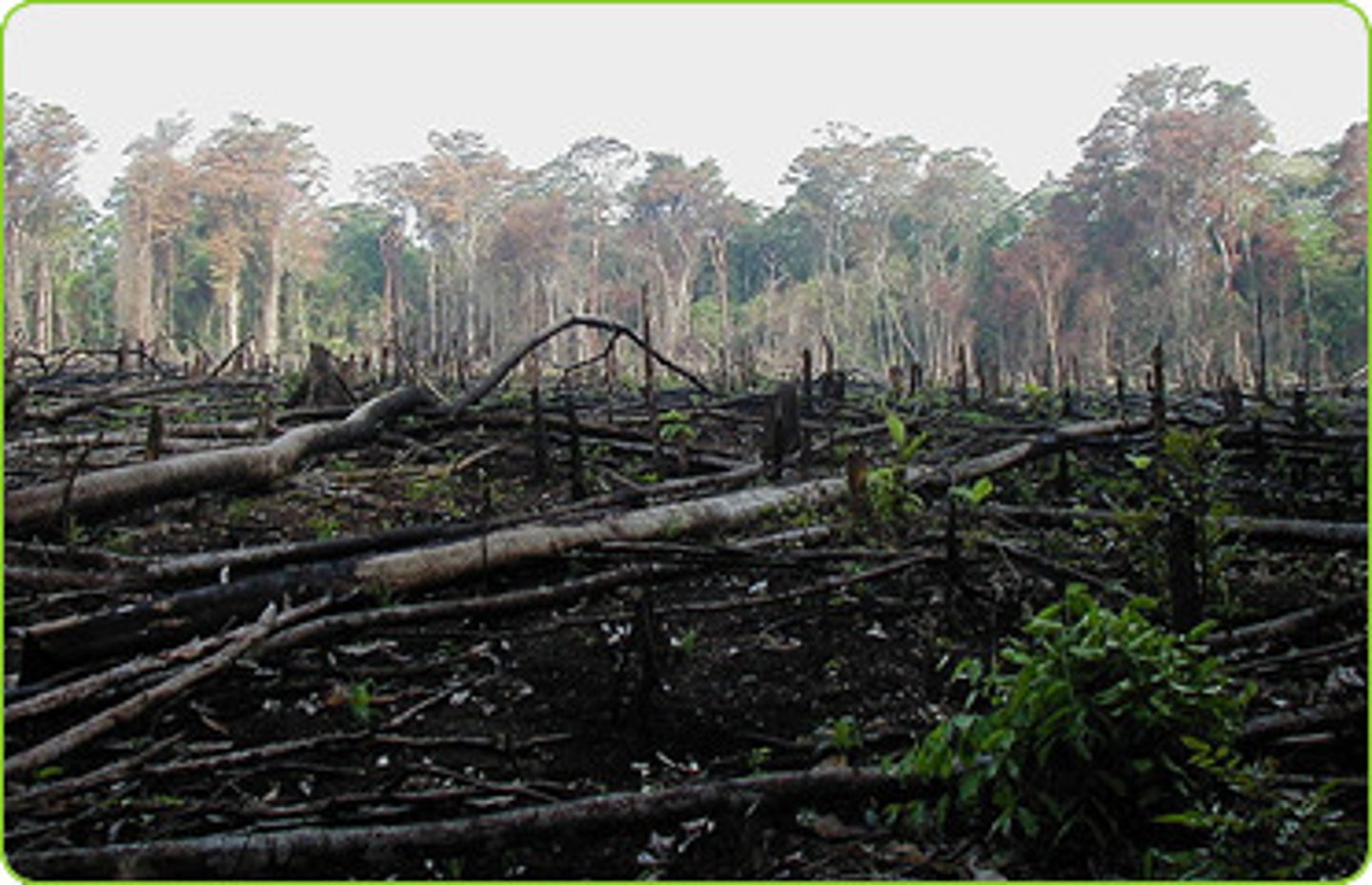
deforestation in indonesia
in 1960 80% of indonesia was rainforest
just under half of original rainforest remains
caused by demand of paper, pulp, plywood and palm oil
more than 1 million hectares cleared every year with 70% of it being on forest on mineral soils and 30% being on peatland forest
indonesia is 3rd largest greenhouse gas emitter - 85% are from degradation of peatland and rainforest
Agriculture
... agricultural land use conversion and process-response:
=> Increasing demand for agro-industrial commodities
- arable farming
- cattle farming

Agriculture - arable
Arable :
- The rising price of oil has stimulated the biofuels industry
- The Brazilian sugar cane industry is one of the world's most efficient sources of ethanol, and it is economically more efficient if the sugar cane is grown closer to main urban centres and port in southern Brazil
- This has pushed soya production north into Amazonia. Soya production has also increased though because of a world increase in soya prices, and is used as animal feed and global meat consumption in increasing
- GM has produced crops tolerant of heat and humidity of the Amazonian climate increasing the pressure of using the land for agricultural purposes
Agriculture - cattle
- Most expansion of soya production has been into areas previously used as cattle pasture, displacing cattle ranchers are pushing even deeper into pristine primary forest
- In northern Brazil over 70 million cattle occupy 85% of the agricultural area
- Since the eradication of foot and mouth disease in Amazonia, the cattle and pig industry have expanded 9% per year accounting for 80% of total deforestation in the last 10 years
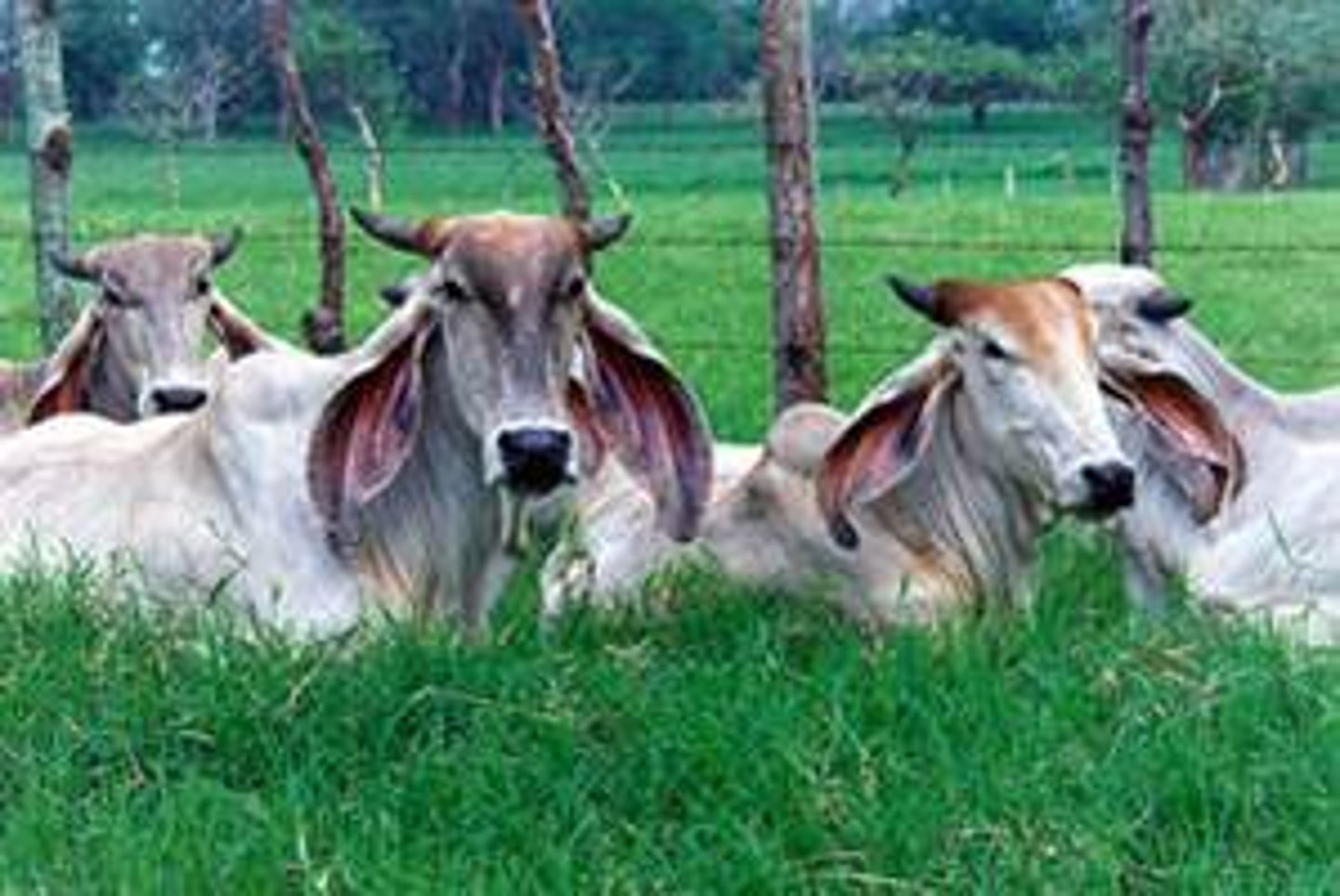
Tropical Rainforest vs Pasture Land
1. Forests absorbs 11% more solar radiation
2. Average temperature in rainforests is 24oc, whereas in pasture it is 33oc
3. Soil temperature in tropical rainforests is 3oc, compared to pasture where it is 8oc
4. Moisture content soil is 15% less in pasture
5. Air humidity is 30% more in tropical rainforests as deep roots extract more water for evapotranspiration
6. Precipitation is 20% more in tropical rainforests
Forest Fragmentation
= clearing areas of forest for cattle ranching and logging
=> creates edge effects, where trees close to the edge are prone to tree mortality because the vegetation is drier and therefore more vulnerable to drought and wild fire
e.g.,
during the 2005 drought at least 3000km2 of forest burnt in wildfires. This forest fire can also create a positive feedback by opening up the forest floor to more solar radiation. However, ash fertilisation will act as a negative feedback stimulating new growth
=> tree mortality induced by drought, fire, selective logging, and fragmentation is the first step in a series of positive feedback and convert humid forest into drier more fire prone brush vegetation
=> in south east Amazonia repeated burning has converted the amazon into a secondary forest dominated by invasive grasses, bamboos, and ferns

Changes Caused by Human Activity and the Environment
Climate change
Vegetational change
Soil changes
Positive Feedback mechanisms
Effects of changing rainfall patterns
Climate Change
- Average temp. increases of 0.25 degrees C every 10 years since 1970
- By 2050 temperature in Amazonia will have increased by 3 degrees C from pre-industrial levels
- Evidence of more extreme temperature fluctuations
- Amazon rainfall fell between 1920 and 1970 but since then there has been no significant change
- Climate drying and forest dieback is also linked to El Nino events and therefore changes in sea surface temperatures SSTs as this ultimately determines weather patterns over the amazon
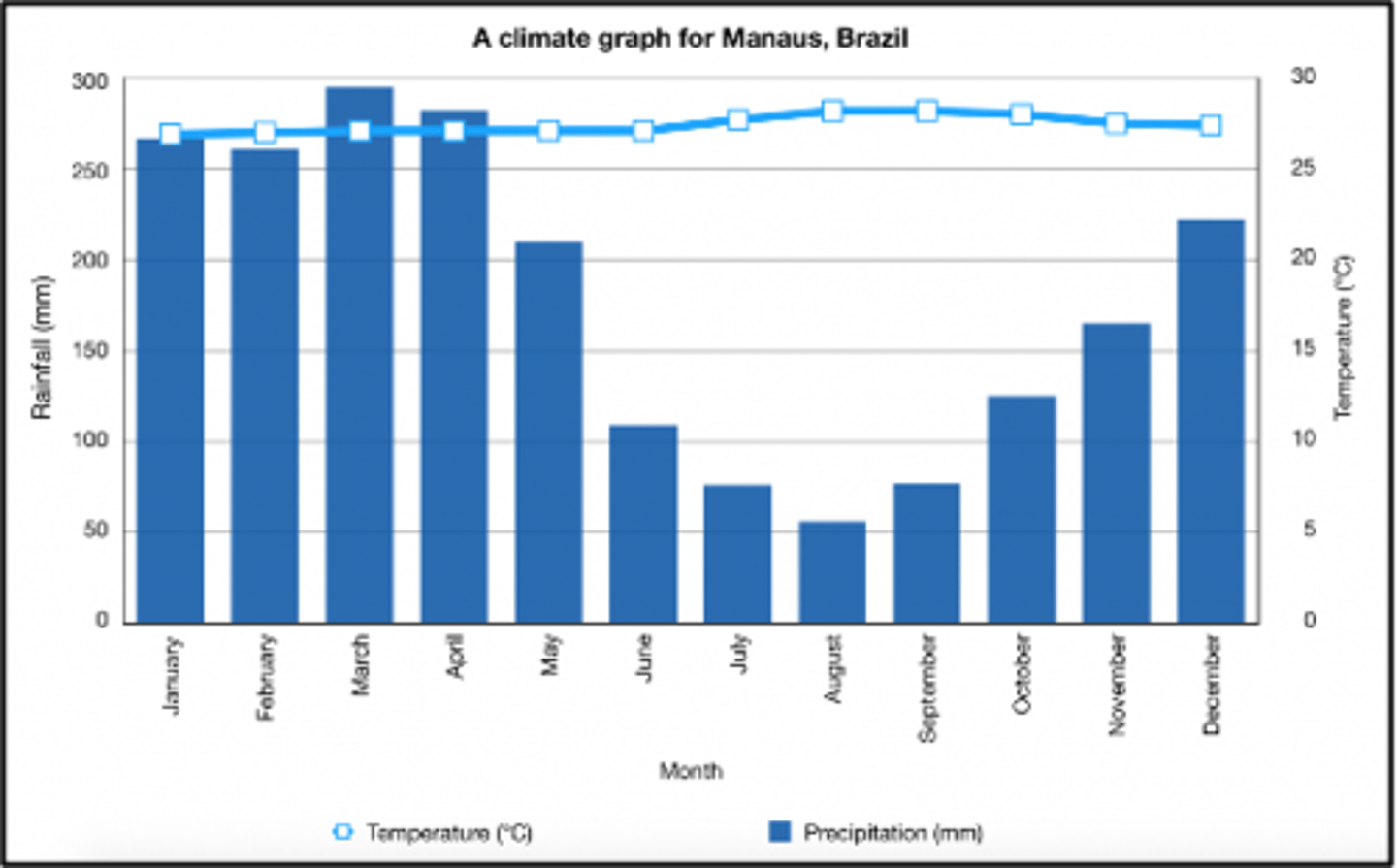
Climate change - consequences on a local and global scale
forest loss => less water locally => less interception => more surface runoff => less surface water to evaporate
(therefore there may be more surface heating but less water to evaporate)
forest loss => increase in surface albedo/surface reflectivity from 0.15 to 0.25
... this reduces convection so rainfall in reduced
large scale forest loss could exert efforts on global atmospheric circulation
... with reduced convectional uplift, the Hadley cell is weakened
... could affect biodiversity of life and disrupt food webs due to changes in precipitation patterns and soil health
Vegetational Changes
WWF estimates that 25% of Amazon Forest has already been lost, which could rise to 27% by 2030 if current deforestation rate continues
=> large vegetation losses by deforestation but also due to climate change and the sensitivity of species of plants to temperature and precipitation change - changing conditions are too rapid and species cannot adapt
=> droughts and unusually high temperatures in recent years may also be playing a role in killing millions of trees
=> A 2009 study concluded that a 2 degrees C rise above pre-industrial levels could see 30% of the Amazon die off within 100 years
=>A 3 degrees C increase could see 75% of the forest killed off by drought over 100 years
=> A 4 degrees C rise = 85% killed off
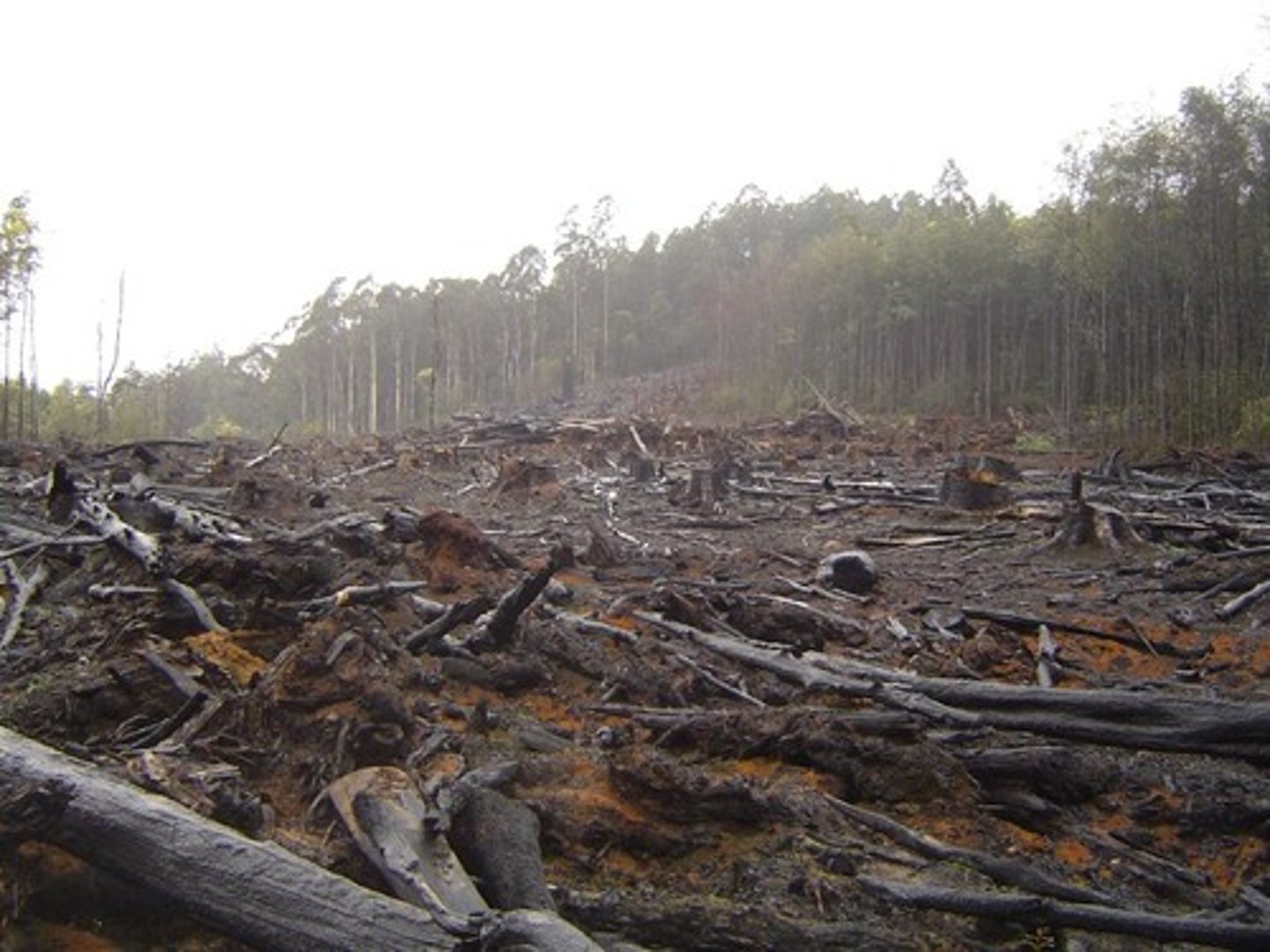
Soil Changes
... Amazonian ferritic soil contains about 7kgC/m2 in the top 50cm (7x higher than pasturelands)
- When the forest is burned 50% of the carbon from the vegetation is lost to the atmosphere and the remaining is released over 10 years via decomposition of the remains
-The bacteria and fungi in the soil used to recycle nutrients also die off meaning soils could be nutrient deficient and insufficient for growth
- Heavy rainfall washes away the topsoil and attacks deep weathered layers, with most of the soil washed away into rivers
2 Positive Feedback Mechanisms dominate the changes to the environment
2 Positive Feedback Mechanism Dominate
1. Reduced forest cover causes a reduction in evaporation
2. Carbon release by dieback contributes to further CO2 rise which accelerates global warming and regional change
... responsible for approx. 30% of precipitation changes in Amazonia
=> 30% of amazon deforested by 2030
=> 25% damaged by drought or logging
=> 20 billion tonnes of carbon could be added to the atmosphere as a consequence of large-scale dieback in the next 30 years
... moving towards a tipping point with many human and physical processes being exacerbated by climate change (acknowledged by IPCC)
Effects of changing rainfall patterns
1. Loss of rainfall leads to overall reduction in discharge
2. Sediment/silt loads of rivers increases which narrows rivers + reduces transport routes
3. Loss of freshwater ecosystems and food supplies due to drier areas
4. Warming river water changes the biodiversity in rivers effects food webs
5. Reduction in dissolved oxygen due to higher temperatures may kill off organisms and change the biodiversity
6. May kill off temperature dependent river organisms
7. Destroy water supply which fulfils the needs of Amazonian people
Leads to flash flooding
Mitigation Strategies in the Amazon
- The Soya Moratorium
- The Cattle Moratorium
- National and International Agreements
- ACTO
- The Tarapoto Process
The Soya Moratorium
... shifting attitudes to emphasise the importance of the Amazon as a vital ecosystem instead of exploiting its resources
=> a number of environmental groups have helped to change public and political will
=> major change in the soybean industry (2006) where Green Peace released "eating up the Amazon" report, showing the connection between soybean industry, deforestation, and slave labour
... targeted the companies Cargill and McDonalds
- Within weeks the industry declared an end to deforestation and a commitment not to buy beans on Amazon land deforested since 2006
- By 2010 less than 1% of soybeans were grown on land that had still been rainforest in 2006
- Soybean production has increased due to multiple cropping and Brazil is now the world's largest producer of soybeans
The Cattle Moratorium
...in 2009, 2 NGO issued "slaughtering the Amazon" reports and Greenpeace issued "Time to pay the bill"
... Friends of the earth raised the issue
- Slaughtering houses around the world agreed to buy cattle only from ranchers registered with the Brazilian rural land registry
- In order to register you need to provide GPS coordinates of your ranch to enable a study of deforestation in your area
- Brazil's biggest beef buyers (e.g., Walmart) suspended contracts with Brazilian beef producers
National and International Agreements
...The UN-REDD global governance programme
=> UN initiative on reducing emissions from deforestation and forest degradation
=> launched in 2008 involved the FAO and UNDP and UNEP
- In 2007 it was estimate that the forest loss contributed to about 17% of global greenhouse gases
- The REDD programme supports national scale actions in management of forests in over 50 countries - stressing the role of sustainable management of forests and increasing carbon sinks
- The Brazil-Norway agreement is the largest REDD programme
... provides US$670 million to create reductions in the first few years
ACTO
8 countries of the amazon basin have developed a criteria and indicators that complies with the framework outlined by the Amazon Cooperation Treaty Organisation
... in 1978, 8 countries signed the ACTO recognising it as the most effective framework on policies for such a vital region
- have made substantial progress in making policies for the Amazon
- have established strategies for the rational use of the Amazon's natural resources to benefit its people considering the natural renewal cycles
- emphasised economic potential of the amazon whilst focusing on the stability of the ecosystem, embracing sustainable development
The Tarapoto Process
= regional criteria and indicators for the sustainability of the Amazonian Forest
- The process recognises that each country's management has an impact on the regions forest resources and on its sustainable and integrated development
- Aims to achieve a common understanding of terms and definitions of sustainability between countries
How effective have the processes been?
A significant reduction in the annual deforestation since 2004
increased in 2013 but this is still 70% lower than the 1996-2005 average
Stepped up enforcement by the 'rainforest police' IBAMA of Brazil
Economic recession in Brazil and a drop in livestock prices will play a part
Until 2012 Brazil seemed to be on track to meet its international climate change target of zero illegal deforestation by 2030
Between 2004 and 2012 Brazil reduced its deforestation rate by 83%
However, since 2012 penalties for illegal deforestation have been reduced and there is little further action the government is willing to enforce
At COP26 in 2021 145 countries signed an agreement to end deforestation by 2030